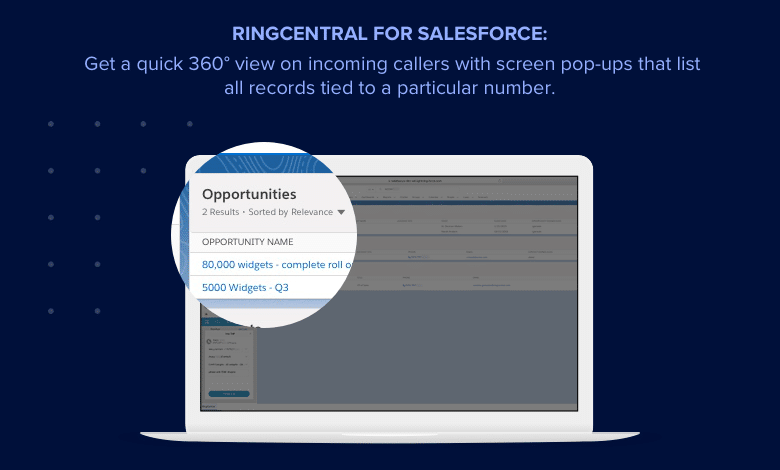Many businesses sell products and services.
You probably work at one.
Then there are businesses that sell value. And we’d argue that these also tend to be the businesses that mark up their prices more, have more customers, get more referrals…
Why? Because they can afford to.
Because when you’re practicing value-based selling, you’re not just selling the material that a piece of clothing is made of. You’re not selling the taste of a bottle of gin. You’re selling an emotion, an experience, the promise of more customers and fewer expenses.
Below, we’ll dive into:
- What value-based selling is and why it’s especially important for small businesses
- How you can train yourself (and your team) on value-based selling
- How to sell on value in 6 steps
What value-based selling is and why it’s so important for small businesses
So, what is value-based selling? Well, at its core, it’s a mindset that you, your sales staff, and any customer-facing employees can adopt. The key is to focus on selling an outcome, not a product.
It works with just about any product or service—for example, you aren’t selling software, but how that software helps your customers manage their business better. You aren’t selling a course, you’re selling the benefits of an education and how that education will change their life. You aren’t selling a dress, you’re selling confidence.
By focusing on value, you’re freeing yourself from having to compete on ticky-tack things like price and giving yourself more freedom to charge a higher price based on the perceived value of your product or service.
Another benefit of value-based selling is customer retention. Why? Because if your customers have a clear understanding of what they’re getting out of your product from the start, that makes it easier for you to meet their expectations, upsell and cross-sell them, and provide a better customer experience. And as long as you deliver on that promised value, they’ll be more likely to stick around—and keep buying from you. Fifty-six percent of customers stay loyal to brands that “get them.”1
It may not seem like much, but a good customer retention rate is especially important for small businesses that don’t have big teams dedicated to customer service. It’s up to 25% more expensive to acquire a new customer than it is to retain an existing customer, so keeping customers around can have a significant impact on your bottom line.2
Value-based selling also offers justification if your product has a higher price tag. To use the dress example from earlier, if you’re just selling the dress, then your price is restricted to the material and labor that went into the dress. But if you’re selling on value, which in case would be confidence, or style, or whatever your dress is meant to evoke, then you can possibly charge a lot more. How can you put a price on something like confidence? You can’t. Confidence—the reflection of the value you’re selling—is priceless.
How can you train yourself (and your team) on value-based selling?
While value-based selling is largely about mindset, there are some tangible ways to bake it into the foundation of your business and your sales management strategy, whether you’re working on a cold call script or about to close a sale.
First, focus on product education. If you or your team don’t really know how the product or service works, there’s no way you’re going to be able to communicate the value to a potential customer.
If you’re selling a digital product or software, encouraging employees to use it is the best education. Share any team knowledge, give them full access to your product, and encourage them to play around with it, see how it works, and even find bugs.
For physical products, you can similarly encourage the team to use the item, and even go one step further by educating them on where it comes from, how it’s made, and how customers use it.
Ask happy customers to share their success stories via email or on social media and share them with the team so they can see all of the problems your product or service is helping people solve.
Frame your sales and product education so that it’s focused on the problems you solve for customers, and how you do it. As tempting as it is to make your brand the star of the show, it’s not—your customers are!
Alongside sales numbers, start tracking retention or return customers as well, so there’s a long-term vision and emphasis on providing continual value for your customers—not just making the initial sale. Play the long game.
How to sell on value in 6 steps
The actual process of value-based selling is simple enough, but requires subtle shifts every step of the way. Depending on your product, sales cycle, and the size of your team, not every step will apply to your business. But, whether you’re selling real estate or a customer service app, a value-based mindset can help you sell more, more easily.
1. Pre-sales research
Before you start planning the perfect sales call, you should understand your target audience. If you don’t have a lot of customers yet for a decent sample size, this might mean creating a customer profile using what you think your best customers might be.
Begin by checking your customer relationship management (CRM) platform or customer service software to see whether anyone on your team has spoken to your prospect before. Check out their past questions and conversations, and see if they’re on your email list.
Use your sales software to see if a prospect has interacted with your business through messaging, live chat, a previous email sales pitch, or even social media. For example, here’s how it looks in RingCentral—everything is pulled into a customer profile in one handy dashboard:
Then, you can start doing a little more research on this specific prospect. This doesn’t have to be super time-consuming, but a quick search to find out some key details about them can go a long way to understanding why they might benefit from your product or service.
For instance, if you’re working on a B2B sale, you might check out your prospect’s company’s social media to see if there have been any big changes lately and take a look at their LinkedIn account to see how long they’ve been with the company.
This foundation will get you in the mode of understanding them so you can deliver the most value.
Make sure to take notes, and if you’re managing a team, try to build good habits. Specifically, entering notes into your cold calling software or CRM during and after every call. This way, even if different people are picking up the conversation with the prospect later on, they’ll all have the same record of what they last talked about with you.
2. Listen
Once you start getting into actual conversations with the prospect, listening is the key to value-based selling. Instead of going into your first interaction with a prospect focusing on your client sales meeting agenda or the product features you want to tell them about, start by thinking through your list of questions.
For a physical product, this might mean a quick conversation about what they’re looking for or what features matter for them. For a B2B sale, it might mean asking about business goals or struggles during your first sales call.
The key is to really listen to the answers—and to take good notes in your cold calling software or CRM so that you (and other people on your team) have this information to refer to later.
As they’re telling you about the struggles they have, you’ll hopefully start to hear opportunities and gaps—which your product can fill. Remember not to rush. Liste and build that trust, so that later when you do make your pitch, you’re making specific and tailored recommendations that address what they’re telling you now.
3. Educate
Taking the time to your potential customers is one of the best ways to show that you’re invested in providing value, not just closing the deal. Plus, it makes it more likely that they’ll trust you and what you have to say—which paves the way for when you ultimately recommend your product.
If you sell online, send educational content so your prospects can learn something new. Maybe in a follow-up email after a call with some helpful articles to address what you discussed instead of just “touching base.”
Education works with an in-person interaction too—think of a boutique salesperson teaching why a certain color works on you or how to pair pieces to make an outfit.
This is also an opportunity to show that you’re listening to your prospect’s biggest headaches.
Think back to the challenges they shared with you, even if they aren’t directly related to the product you’re selling. You want to be a trusted advisor, not just a salesperson.
Learn more about sales demo best practices.
4. Skip the hard sell, focus on the value of the product
When it does come time to talk about your product, it’s important to focus on how it solves this prospect’s needs. Skip the hard sell or the long list of features, and refer to your notes for this prospect instead.
Find the pain points that this prospect has mentioned already, and focus your pitch on how this product or service will help with those.
If your prospect is complaining about how busy they are, show them how your solution saves time. If they’re worried about learning how a new product works, showcase your educational videos.
Sometimes, you need to dig a little deeper than the initial struggle your prospect is mentioning. (This is why we mentioned that it’s important to not rush in that earlier step.)
For instance, if you’re a photographer and a prospect mentions how they hate getting their photo taken, you might ask what they don’t like about being photographed or what they want to use their photos for to really understand the root of their problem.
Once you discover that they want photos that they can share on their business social media page, you can understand how their stiff headshots don’t serve them and show them how your more relaxed sessions can solve that problem.
Stay focused on how you can solve their specific problems.
5. Think long term
This is probably the hardest shift for salespeople and businesses that are used to tracking goals against the calendar. But there can be benefits to moving to a long-term mindset. For example, you’ll be able to avoid pushing prospects too hard and making them uncomfortable. Unless your prospect is ready to buy, use the cold call to get an appointment first, not the sale.
Plus, if you’re tracking retention and repeat purchases, you’ll be able to reframe the sales cycle so that you’re focusing on the overall lifetime value of your customer—not just the speed of that initial sale. If a sale takes a little longer, but that customer understands your value better and stays with you for a few more years, that’ll pay off in the long run, no?
Of course, if you have a longer sales cycle, that does increase the chance that you’ll forget or drop the ball on crucial details that would’ve helped you offer value on, say, a phone call. That’s where having a phone service that integrates with your CRM can be really useful.
For instance, by using RingCentral’s Salesforce integration, you can have informational pop-ups triggered by inbound calls:
That means you’ll have all the information you need to really deliver value to a prospect based on what you’ve learned about them over time.
6. Work with your marketing team
Value-based selling isn’t something you can try for one call and then go back to your old way of doing things—it’s an all-or-nothing approach.
And because value-based selling is all about the long term, you should be thinking about how you can add value in every interaction with a prospect.
Even if your small business doesn’t have a high-touch sales process, you’re probably sending marketing emails, posting on social media, and publishing blog posts. Those aren’t sales conversations, but you should be offering value there. This is where effective teamwork can really help with your end goal of closing a deal—and why long-term thinking is so essential.
If a prospect has been receiving value from your brand and marketing team from the get-go, way before you have that first sales call, then you’re essentially setting the stage for your sales team and making their job much easier.
If you’ve done this groundwork, when you do breach the sales conversation, your prospect will be eager to convert because they already know and love what you do, feel connected to your brand, and are confident that you know what you’re talking about.
By becoming a trusted resource, you’ve not only secured a sale, but you’ve also created a fan who will be loyal to you and might even send referrals your way. It takes a little more effort, but, in the end, it makes for a much more valuable customer. (The value goes both ways!)
Value-based selling for your small business
While value-based selling requires a shift in mindset, it’s a sales strategy that works particularly well for small businesses. It encourages the kind of customer retention that gives small businesses stable ground to stand on.
No matter what product or service your small business sells, by focusing on the value you provide and working to create a relationship with customers, you can not only make more sales, but also create avid fans while you’re at it.
1 smallbizgenius.net/by-the-numbers/customer-loyalty-statistics/#gref
2 hbr.org/2014/10/the-value-of-keeping-the-right-customers
Originally published Jul 06, 2020, updated Sep 14, 2020






